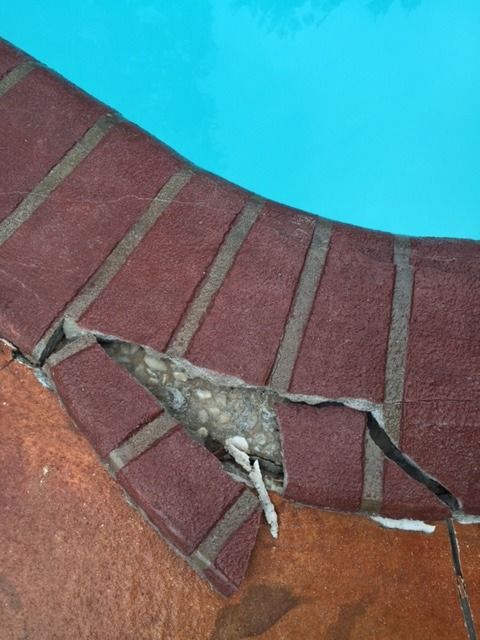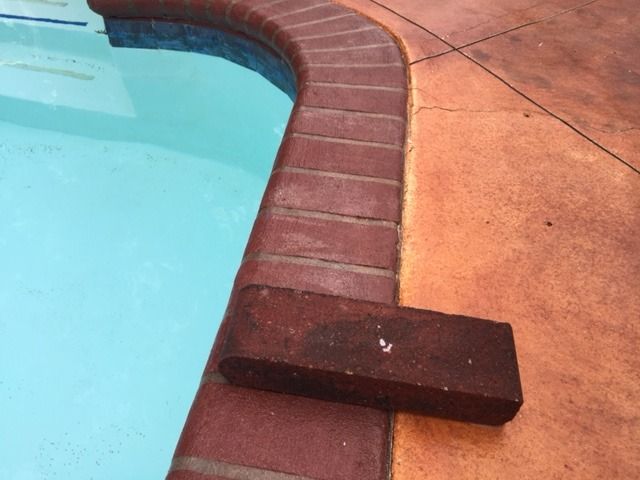

I found a deal on these 14" (cast concrete) bullnose pavers. My existing pool was lipstick repaired by the previous owner(flipper). He put acrylic overlay on what appears to be aggregate coping. 3 years later it is starting to crack up. It's only 9". I don't know if I should cut the deck back ( curved corners) or cut the pavers shorter. He also put the overlay on the deck. It would have been ok but it's busting in all the concrete seams underneath. I will address that later. I will probably learn more when I tear out the coping but I think it's pretty thick near the pool to match the thick overlay on the coping. The deck seems to slope away from the pool a lot. Advice on mortar would be appreciate.
Last edited:

